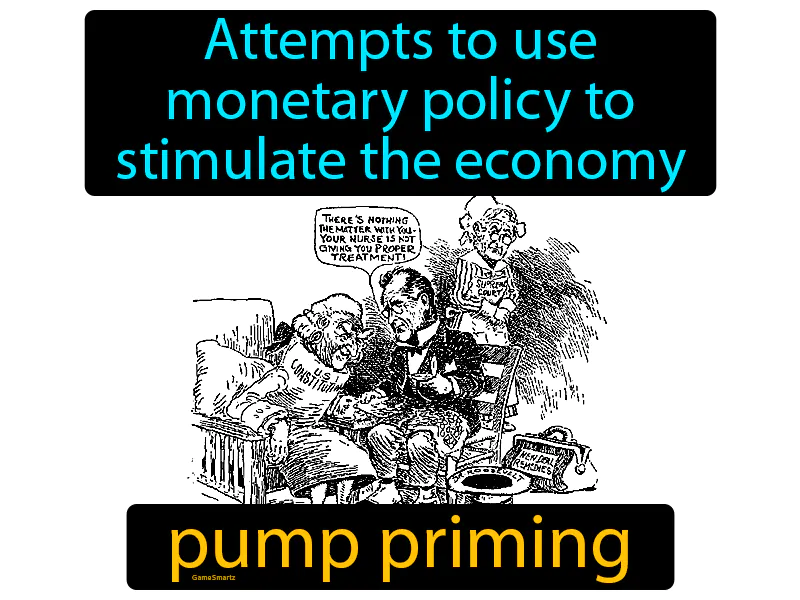Pump Priming

Pump priming during The New Deal (1933-1940) referred to the U.S. government's efforts to jumpstart the economy by injecting money into it, hoping to encourage spending and job creation. This was important during the Great Depression when unemployment was high, and businesses were failing. It responded to the urgent need to revive the economy and provide relief to struggling Americans. Today, pump priming can still be seen when governments lower interest rates or increase spending to stimulate economic growth during downturns. For example, during the COVID-19 pandemic, many governments provided stimulus checks to citizens to encourage spending and help businesses stay afloat, which directly affected people by providing financial support during tough times.
Practice Version

Pump Priming: Attempts to use monetary policy to stimulate the economy. Pump priming. Pump priming is a government strategy used during the Great Depression to boost economic activity by increasing public spending.